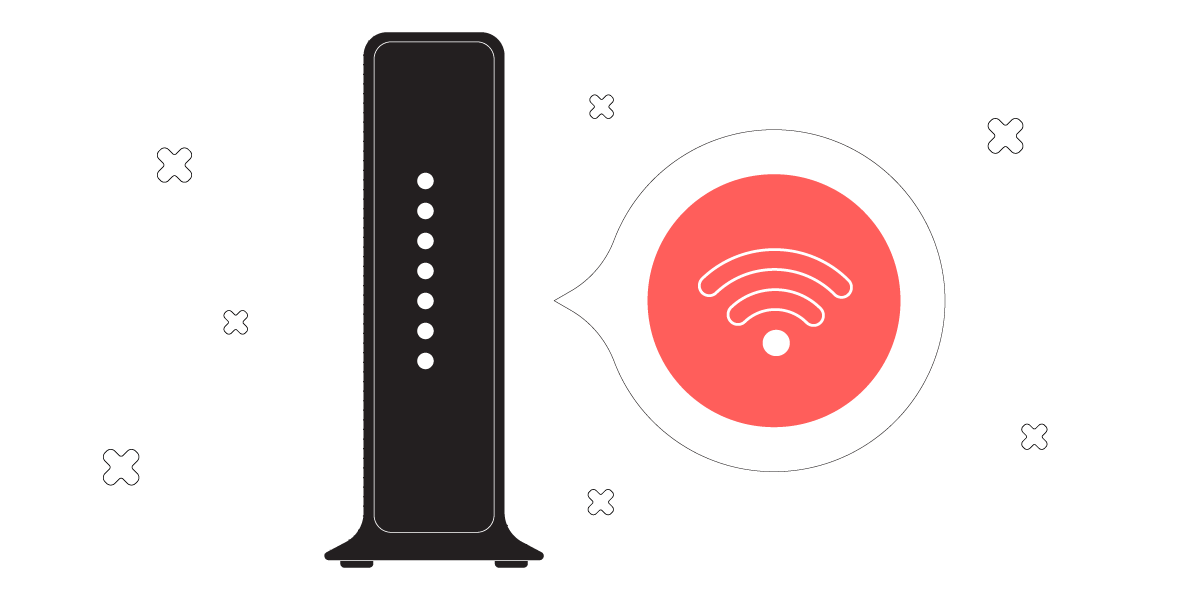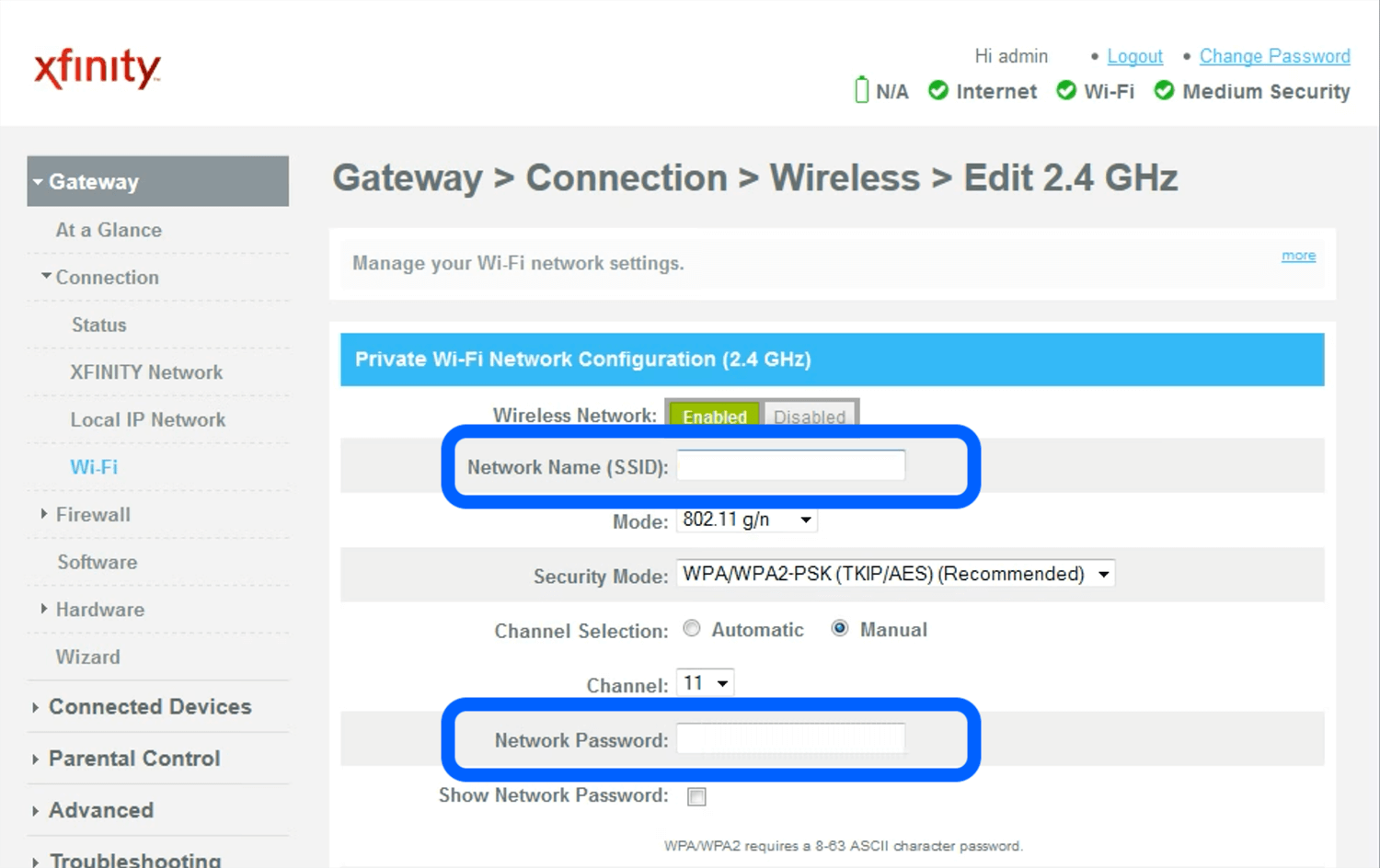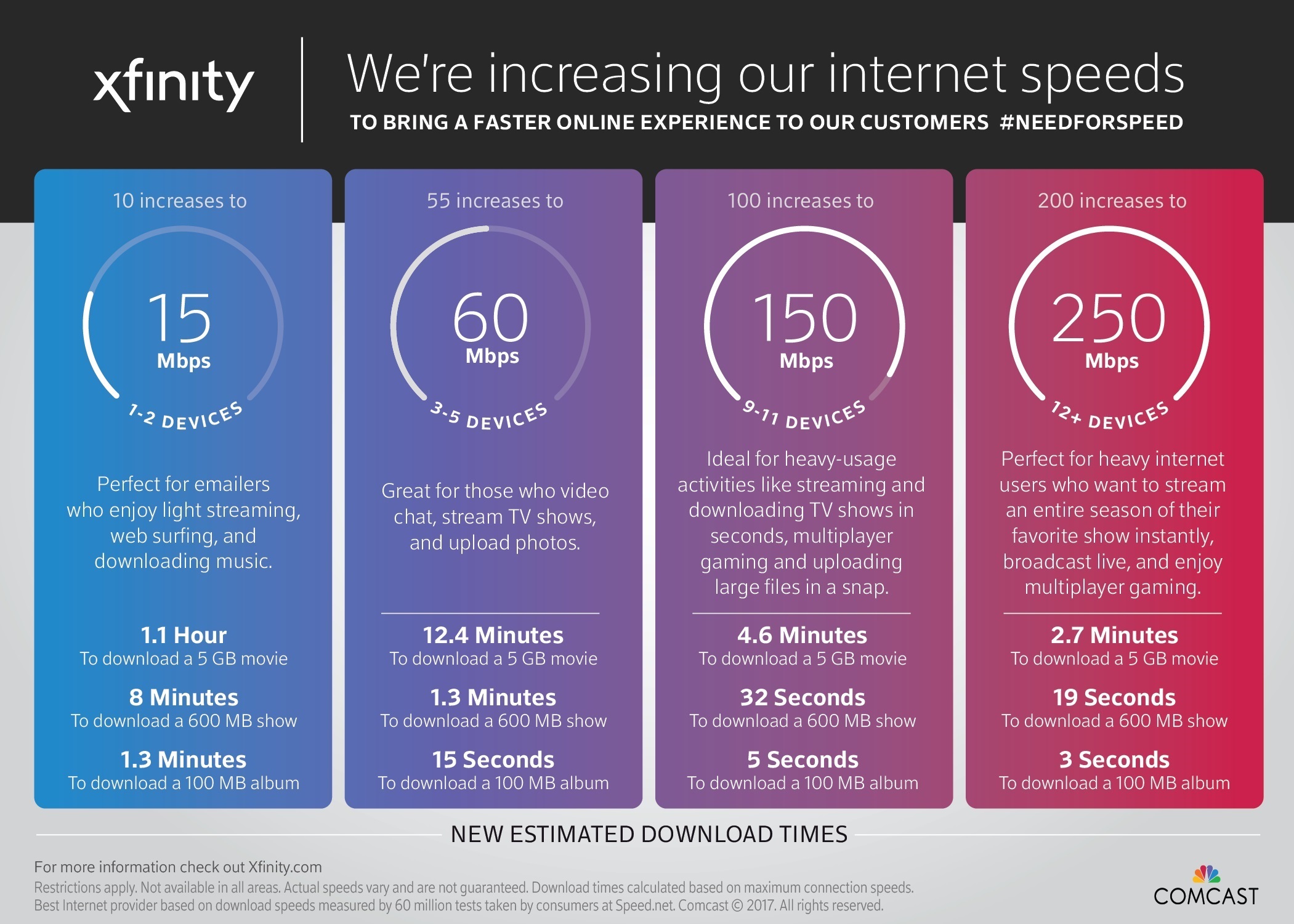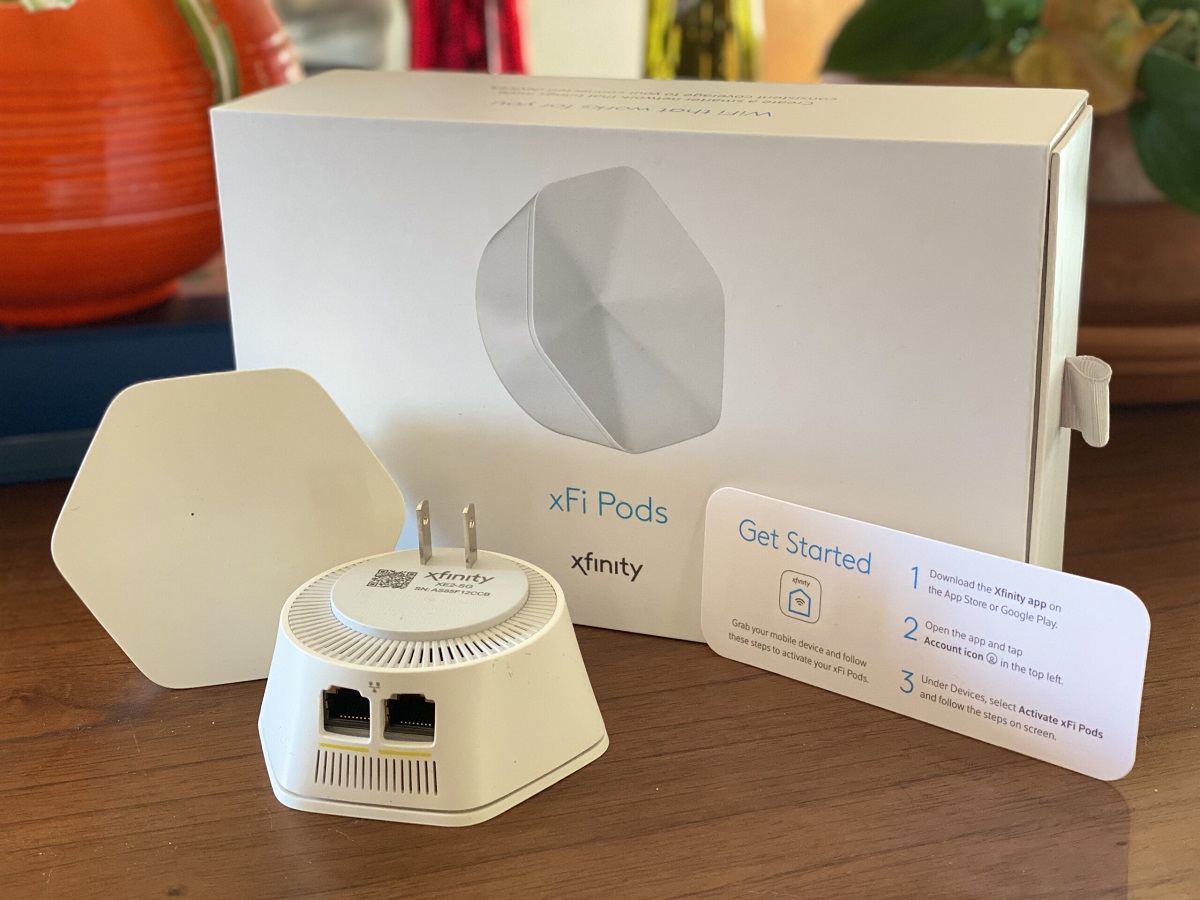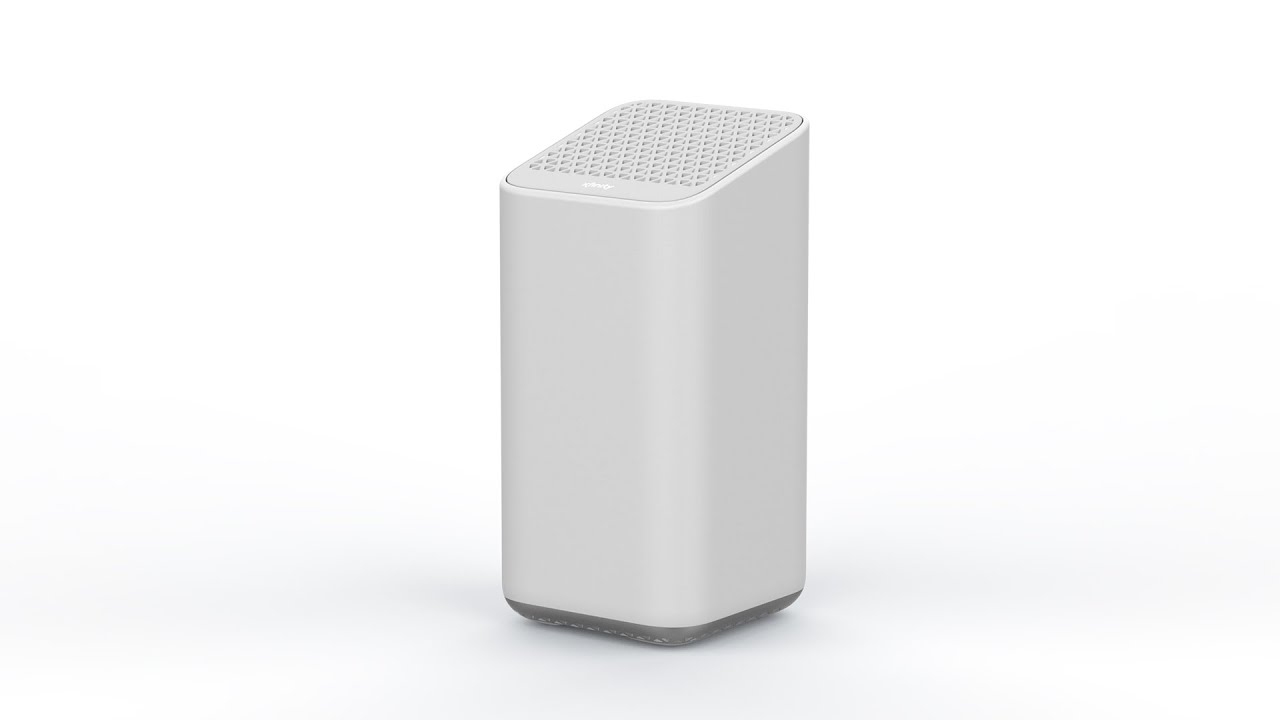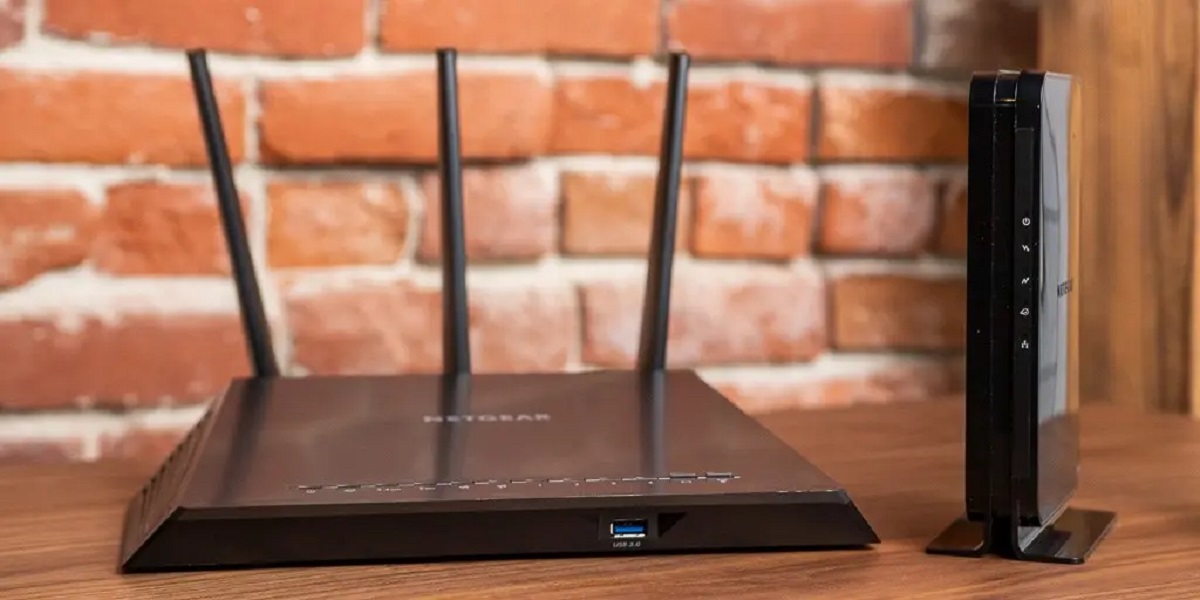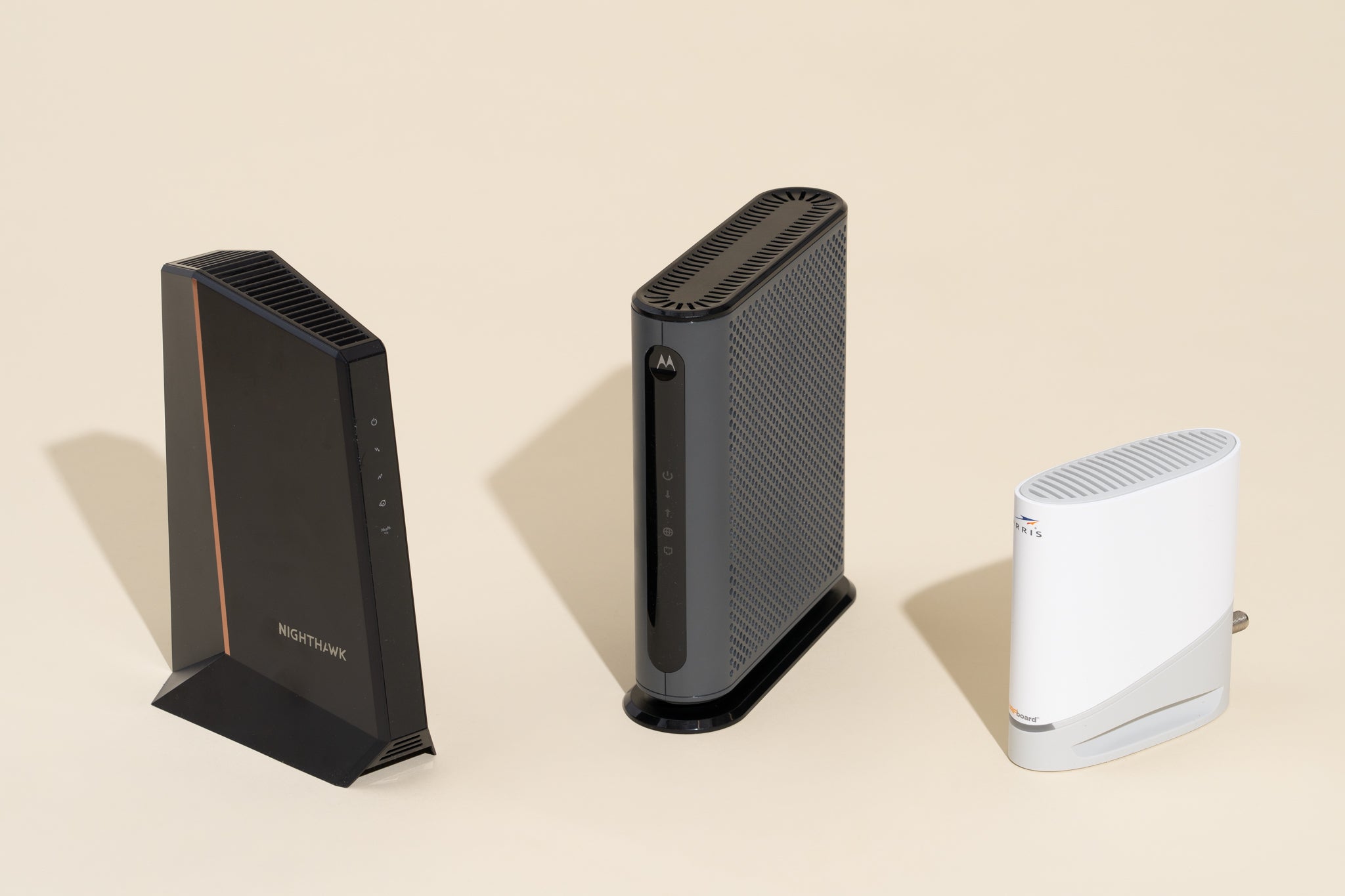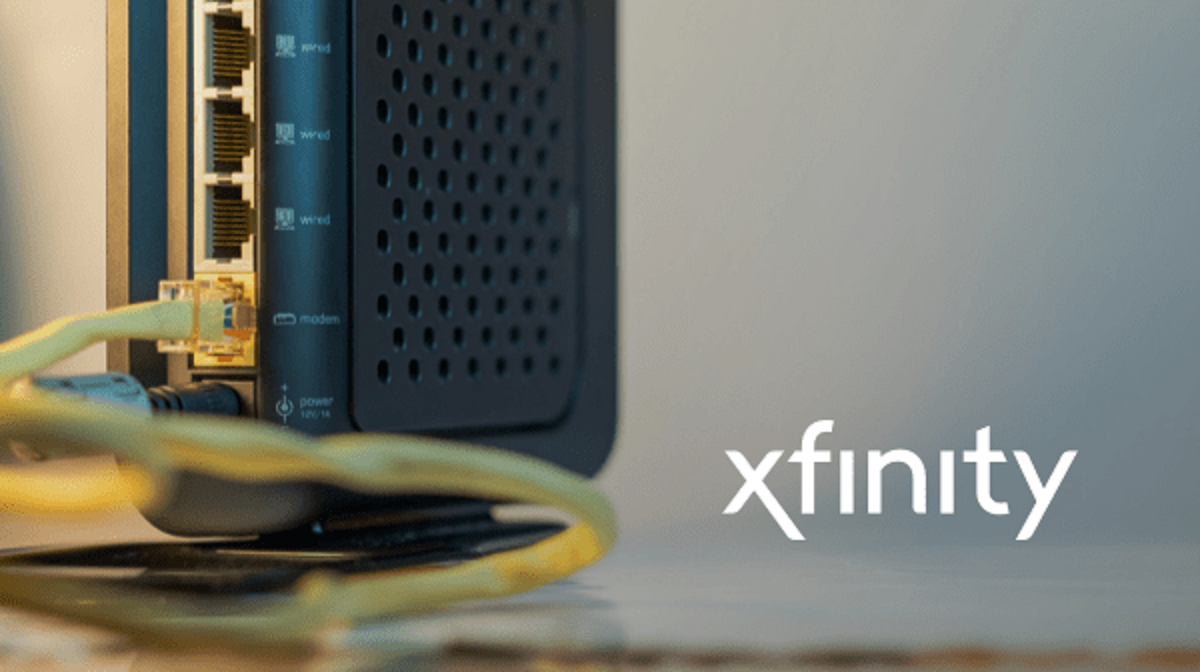Introduction
Welcome to the world of Xfinity, where fast and reliable internet connectivity is at your fingertips. However, there can be instances when your Xfinity WiFi may not be working as expected, causing frustration and inconvenience. In this article, we will explore some of the potential reasons why you may be experiencing issues with your Xfinity WiFi and provide troubleshooting steps to help get you back online.
Having a stable and efficient internet connection has become an essential part of our daily lives, whether it’s for work, entertainment, or staying connected with loved ones. Xfinity offers a range of internet plans, equipment, and services to meet your needs. However, even the most advanced technology can sometimes encounter hiccups.
When your Xfinity WiFi stops working, it can be frustrating, especially if you rely heavily on it for various tasks. Before you start troubleshooting, it’s important to understand that there could be several factors contributing to the issue. It could be anything from network problems to device interference or a simple incorrect password entry.
Fortunately, most WiFi connectivity issues can be resolved with a few troubleshooting steps. By diagnosing and addressing the specific problem, you can quickly restore your Xfinity WiFi to its optimal performance and continue enjoying uninterrupted internet access.
In the following sections, we will discuss some of the common reasons why Xfinity WiFi may not be working and provide step-by-step solutions to resolve each issue. So, let’s dive in and address these problems head-on!
Reasons for Xfinity Wifi Not Working
There can be several factors that may cause your Xfinity WiFi to stop working. Understanding these potential issues can help you troubleshoot and resolve the connectivity problem more effectively. Let’s explore some of the most common reasons:
1. Network Issues: Sometimes, the issue may lie with the overall network infrastructure. Xfinity may experience temporary outages or maintenance in your area, affecting the WiFi connection. It’s always a good idea to check the Xfinity service status page or contact customer support to verify if there are any network issues in your location.
2. Modem or Router Problems: Another common reason for WiFi connectivity problems is due to a malfunctioning modem or router. It could be due to hardware issues, outdated firmware, or configuration errors. In such cases, restarting your equipment or updating the firmware can often solve the problem.
3. Interference from Other Devices: WiFi signals can be disrupted by other electronic devices in your vicinity. Cordless phones, microwave ovens, baby monitors, and even neighboring WiFi networks can cause interference. Ensure that your WiFi router is placed away from such devices to minimize signal disruption.
4. Incorrect Password or Login Credentials: It may sound simple, but sometimes the problem lies in entering the correct password or login credentials. Double-check that you have entered the right information, including uppercase and lowercase letters, numbers, and special characters.
5. Service Outage in Your Area: Occasionally, Xfinity may experience a service outage in your area due to unforeseen circumstances or maintenance activities. It’s worth checking with Xfinity customer support or their service status page to determine if there is a widespread connectivity issue affecting your WiFi.
6. Outdated Equipment Firmware: Firmware updates ensure that your modem or router functions optimally. Outdated firmware can lead to connectivity problems. Be sure to check for firmware updates regularly and install them to keep your equipment up to date.
7. Signal Interference from Walls or Obstacles: Physical barriers like walls and furniture can weaken WiFi signals. If your router is placed far away from your devices or blocked by walls or large obstacles, it can result in poor signal strength and intermittent connectivity. Consider repositioning your router for better signal coverage.
8. Overloaded Network: If too many devices are connected to your WiFi network simultaneously, it can overload the network capacity and slow down the connection for all users. Disconnect any unnecessary devices or upgrade your internet plan to accommodate the increased bandwidth demand.
Identifying the specific reason behind your Xfinity WiFi connectivity issues is crucial in finding the appropriate solution. In the following section, we will go through some troubleshooting steps that can help you resolve the problem and get your WiFi up and running again.
Network Issues
When your Xfinity WiFi is not working, one of the first factors to consider is whether there are any network issues affecting your internet connection. Here are some common network-related problems that can disrupt your WiFi:
Service Outages: Xfinity may experience service outages in your area due to maintenance or technical issues. These outages can cause a complete loss of internet connectivity. Checking the Xfinity service status page or contacting customer support can help determine if there is a network-wide issue impacting your WiFi connection.
Signal Interference: WiFi signals can be weakened or disrupted by various factors such as walls, physical barriers, and other electronic devices within close proximity. If you’re experiencing low signal strength or intermittent connection, consider repositioning your WiFi router to a central location and away from potential sources of signal interference.
Router Placement: The location of your WiFi router can significantly impact its signal coverage. Placing your router in an enclosed space, like a cabinet, can hinder its ability to transmit a strong and stable signal. Try positioning your router in a higher, open area for better coverage throughout your home or office.
Router Configuration: Incorrect router settings can also lead to network issues. Ensure that your WiFi router is configured correctly and that the network name (SSID) and password are entered accurately. You can access your router’s configuration page by entering its IP address in a web browser.
Wireless Interference: Other wireless devices in your vicinity, such as cordless phones, Bluetooth devices, and even neighboring WiFi networks, can cause interference and disrupt your WiFi connection. Switching to a less congested wireless channel or using devices that operate on a different frequency can help mitigate wireless interference.
Overloaded Network: A network that is crowded with too many connected devices can experience slowdowns and connectivity issues. If multiple devices are consuming the available bandwidth simultaneously, it can result in poor performance. Disconnecting any unnecessary devices or upgrading your internet plan to accommodate higher bandwidth demand can alleviate this issue.
When troubleshooting network-related issues with your Xfinity WiFi, performing a few simple steps can often resolve the problem. Power cycling your router, ensuring proper router placement, and minimizing signal interference are some effective measures to try before moving on to other troubleshooting steps.
By identifying and addressing any network-related issues, you can optimize the performance and reliability of your Xfinity WiFi connection.
Modem or Router Problems
When your Xfinity WiFi is not working, potential problems with your modem or router can be a major culprit. Here are some common modem or router-related issues that may be affecting your WiFi connection:
Hardware Malfunction: Over time, hardware components in your modem or router can wear out or malfunction, leading to connectivity problems. It’s recommended to check the lights on your modem or router to ensure they are indicating a proper connection. Power cycling the devices by unplugging them for a few seconds and then reconnecting can often resolve minor hardware issues.
Outdated Firmware: Firmware is the software that runs on your modem or router, and outdated firmware can cause compatibility and connectivity issues. Checking for firmware updates regularly and installing them when available can help keep your equipment running smoothly and optimize its performance.
Incorrect Configuration: Incorrect router configuration settings can lead to connectivity problems. Ensure that your modem or router is correctly configured, and the network name (SSID) and password are entered accurately. You can access the router configuration page by typing the router’s IP address into a web browser.
Compatibility Issues: In some cases, compatibility issues between your modem or router and other devices on your network can cause WiFi connectivity problems. Ensure that all devices on your network, including computers, smartphones, and smart devices, are compatible with the specifications of your modem or router.
Overheating: A router that overheats due to continuous usage or poor ventilation can experience performance issues, including intermittent WiFi connectivity. Ensure that your router is placed in a well-ventilated area and not subjected to excessive heat from other electronic devices.
Hardware Damage: Physical damage to your modem or router, such as frayed cables or loose connections, can also cause WiFi connectivity problems. Inspect all cables and connections to ensure they are secure and free from any visible damage.
Power Supply Issues: Insufficient power supply to your modem or router can lead to fluctuations in connectivity. Ensure that the power adapter is properly plugged in and that the power source is stable.
When addressing modem or router-related issues, it’s recommended to start by restarting your equipment. Power cycling your modem and router can help resolve minor hardware or configuration issues. Additionally, checking for firmware updates, ensuring proper ventilation, and inspecting cables and connections can further help identify and rectify any problems.
If the above steps do not resolve the issue, contacting Xfinity customer support for further assistance is advised. Their technical support team can provide specific troubleshooting steps or guide you through the process of replacing any faulty hardware.
Interference from Other Devices
Interference from other devices can have a significant impact on the performance of your Xfinity WiFi. Here are some common sources of interference and what you can do to minimize their effects:
Cordless Phones: Cordless phones, especially older models, can operate on the same frequency as WiFi networks, causing interference. Consider upgrading to a DECT 6.0 or higher model, which operates on a different frequency and is less likely to interfere with your WiFi signal.
Microwave Ovens: Microwaves emit strong electromagnetic waves that can interfere with WiFi signals. Keep your WiFi router away from the kitchen or any areas where microwaves are frequently used. If possible, place them on opposite sides of the room or use a WiFi channel that is less affected by microwave interference.
Baby Monitors: Baby monitors, especially those operating on the 2.4GHz band, can disrupt WiFi signals. Try using a baby monitor that operates on a different frequency or consider upgrading to a WiFi-enabled baby monitor that utilizes your network rather than operating on a separate frequency.
Bluetooth Devices: Bluetooth devices, such as headsets, speakers, and keyboards, can interfere with WiFi signals, especially if they are in close proximity to your router or device. If you’re experiencing connectivity issues, try moving your Bluetooth devices further away from your WiFi router or temporarily disable Bluetooth on your devices when not in use.
Neighboring WiFi Networks: If you live in a densely populated area, neighboring WiFi networks can cause interference. WiFi routers that are set to the same channel can experience signal overlap and degrade performance. Use a WiFi analyzer tool to determine which channels are the least congested and manually set your router to operate on those channels.
Electronic Gadgets: Other electronic devices like wireless security cameras, game consoles, and smart appliances can also contribute to WiFi interference. Keep them away from your WiFi router or consider using devices that operate on a different frequency.
Minimizing interference from other devices can significantly improve the performance and reliability of your Xfinity WiFi. Relocating your router away from these sources of interference, using devices that operate on different frequencies, or adjusting channel settings can help reduce the impact of interference on your WiFi signal.
It’s important to note that eliminating all sources of interference may not always be possible, especially in environments with multiple devices and networks. However, by following these suggestions, you can mitigate interference and enhance the overall WiFi experience.
Incorrect Password or Login Credentials
One of the simplest yet often overlooked reasons for WiFi connectivity issues is entering an incorrect password or login credentials. Here’s what you need to keep in mind when dealing with incorrect password or login credential problems:
Double-Check Password: It may seem obvious, but it’s important to ensure that you’re entering the correct password for your WiFi network. Pay attention to uppercase and lowercase letters, numbers, and special characters. A single mistyped character can prevent you from connecting to your Xfinity WiFi.
Password Retrieval: If you’ve forgotten or misplaced your WiFi password, you can retrieve it easily. The Xfinity website or mobile app allows you to access your account and retrieve your WiFi network information, including the password. Alternatively, you can contact Xfinity customer support for assistance in retrieving your password.
Login Credentials: In addition to the WiFi password, incorrect login credentials for your Xfinity account can also cause connectivity issues. Ensure that you’re entering the correct username and password when accessing your account or configuring your WiFi settings. If necessary, reset your Xfinity account credentials or contact customer support for assistance.
Account Suspension: In some cases, if your Xfinity account has been suspended due to non-payment or other reasons, your WiFi connection may be disabled. Contact Xfinity customer support to determine if there are any issues with your account that may be affecting your WiFi connectivity.
Guest Network Access: Xfinity routers often offer a separate guest network with its own username and password. If you’re trying to connect to the guest network and experiencing connectivity issues, double-check that you’re using the correct guest network credentials.
Mistakenly entering incorrect passwords or login credentials is a common human error that can easily be rectified. Double-checking your WiFi password, retrieving it if necessary, ensuring the accuracy of your login credentials, and verifying the status of your Xfinity account can help resolve connectivity issues related to incorrect password or login credentials.
If you continue to experience WiFi connectivity problems despite entering the correct credentials, it may be worth considering other potential factors mentioned earlier. However, for most cases, making sure that you have the correct password and login information can quickly solve the problem and have you back online in no time.
Service Outage in Your Area
An unexpected service outage in your area can be a frustrating cause for your Xfinity WiFi not working. Here’s what you need to know about service outages and how to address them:
Check Service Status: Before assuming that there’s an issue with your WiFi, it’s essential to check the Xfinity service status page or contact customer support to verify if there is a known outage in your area. Service outages can occur due to maintenance activities or unexpected technical issues, which can affect the availability of your WiFi connection.
Report the Outage: If you determine that there is a service outage in your area, it’s a good idea to report it to Xfinity customer support. While service providers usually have automated systems that detect outages, reporting the issue can ensure that your specific location is taken into consideration. It also allows you to receive updates on the progress of the outage resolution.
Patience is Key: Service outages are typically resolved as quickly as possible, but the restoration time can vary depending on the nature and extent of the issue. It’s important to remain patient and wait for the service to resume. In the meantime, you can use alternative methods to access the internet, such as mobile data or public WiFi hotspots.
Take Advantage of Xfinity WiFi Hotspots: Xfinity offers a vast network of WiFi hotspots throughout various locations. If there is a service outage in your area, you may still be able to connect to Xfinity WiFi hotspots nearby. You can use the Xfinity WiFi app or visit the Xfinity website to locate available hotspots and access the internet until the service is restored in your area.
Stay Informed: During a service outage, it’s crucial to stay informed about the progress of the restoration. Xfinity often provides updates through their service status page, social media platforms, or automated notifications. Checking for updates periodically can help you stay informed about the estimated time of service restoration.
Service outages are temporary disruptions that can occur for various reasons beyond your control. By staying informed, reporting the outage, and being patient, you can navigate through the downtime and get back to enjoying your Xfinity WiFi once the service is restored.
If you continue to experience connectivity issues after the outage has been resolved, there may be other factors at play. In such cases, it’s advisable to follow the troubleshooting steps outlined in the next section.
Outdated Equipment Firmware
Outdated firmware on your modem or router can lead to compatibility issues and cause your Xfinity WiFi to stop working correctly. Here’s what you need to know about outdated equipment firmware and how to resolve this issue:
What is Firmware? Firmware is the software that runs on your modem or router, providing the necessary instructions for its operation. Manufacturers release firmware updates to address bugs, improve performance, enhance security, and add new features to their devices.
Impact on WiFi Connectivity: Outdated firmware can lead to compatibility problems and may not fully support the latest WiFi standards. This can result in decreased performance, intermittent connectivity, or even a complete loss of connection.
Check for Firmware Updates: To ensure that your equipment is running the latest firmware, visit the manufacturer’s website or access the modem or router’s administration page. Look for a “Firmware” or “Software Update” section and follow the instructions to check for and install any available updates.
Installing Firmware Updates: Firmware updates generally involve downloading the latest firmware file from the manufacturer’s website and uploading it to your modem or router. Follow the instructions provided by the manufacturer to ensure a successful update. It’s essential to refrain from interrupting the update process as it can negatively impact the performance of your equipment.
Regular Firmware Maintenance: It’s good practice to periodically check for firmware updates and install them as they become available. Keeping your equipment’s firmware up to date ensures optimal performance, enhanced security, and compatibility with the latest WiFi standards and technologies.
Consultation or Professional Assistance: If you are uncomfortable or unfamiliar with updating firmware or encountering difficulties during the update process, it’s advisable to seek assistance from the manufacturer’s support team or consult with a professional for guidance. They can provide step-by-step instructions or help ensure a smooth firmware update process.
By regularly updating the firmware on your modem or router, you can ensure compatibility, improve performance, and maintain a reliable WiFi connection. Firmware updates are an essential aspect of maintaining the overall health and functionality of your Xfinity WiFi equipment.
If you have updated your equipment’s firmware and are still experiencing WiFi connectivity issues, it’s recommended to continue troubleshooting by following the steps outlined in the next section.
Signal Interference from Walls or Obstacles
Signal interference caused by walls or obstacles is a common issue that can impact the performance and range of your Xfinity WiFi. Here’s what you need to know about signal interference and how to mitigate its effects:
Signal Attenuation: WiFi signals can be weakened or blocked by physical barriers such as walls, floors, and furniture. This attenuation can result in reduced WiFi range and diminished signal strength, leading to intermittent or poor connectivity.
Router Placement: One of the most effective ways to mitigate signal interference is by placing your WiFi router in an optimal position. Position it in a central location within your home or office and away from thick walls and large obstacles. This can help ensure that the WiFi signals radiate evenly and cover a larger area.
Obstacle Reduction: Rearranging furniture or moving large objects that obstruct the WiFi signal path can improve signal strength. By reducing the number of obstacles between the WiFi router and your devices, you can minimize signal loss and enhance your WiFi connectivity.
Signal Penetration: Different materials attenuate WiFi signals differently. For example, concrete, brick, or metal walls can significantly weaken the WiFi signal compared to drywall or wooden partitions. If possible, position your WiFi router in an area where the signals can easily penetrate walls and obstacles for better coverage.
WiFi Range Extenders: If you have areas in your home or office that are far from the WiFi router and experience weak signals, consider using WiFi range extenders or repeaters. These devices pick up the WiFi signal from your router and rebroadcast it, extending the coverage into areas with limited signal strength.
Mesh WiFi Systems: Another option for improving WiFi coverage and reducing signal interference is using a mesh WiFi system. Mesh systems consist of multiple routers that work together to create a seamless network. They can distribute WiFi signals more effectively, providing consistent coverage throughout your home or office.
WiFi Channel Optimization: WiFi routers operate on different channels within the 2.4GHz and 5GHz frequency bands. Other nearby WiFi networks can operate on the same channel, causing overlap and interference. Using a WiFi analyzer tool, you can identify the least congested channel and manually set your router to operate on that channel for improved performance.
By understanding and addressing signal interference caused by walls or obstacles, you can optimize your Xfinity WiFi connectivity. Proper router placement, minimizing obstacles, utilizing WiFi range extenders or mesh systems, and optimizing WiFi channels can significantly improve signal strength and coverage throughout your environment.
If you have taken the necessary steps to reduce signal interference and are still experiencing WiFi connectivity issues, continue troubleshooting by following the steps outlined in the next section.
Overloaded Network
An overloaded network can lead to slow internet speeds and connectivity issues with your Xfinity WiFi. Here’s what you need to know about this issue and how to alleviate network congestion:
Bandwidth Allocation: The available bandwidth of your internet connection is shared among all the devices connected to your network. If there are too many devices simultaneously consuming the available bandwidth, it can result in a slowdown of the internet speed for all users.
Limit Device Connections: Consider limiting the number of devices connected to your WiFi network, particularly those that don’t require a high-speed internet connection. Disconnecting devices that are not actively in use can help alleviate network congestion and improve overall performance.
Upgrade Internet Plan: If you frequently experience network overload due to multiple devices demanding more bandwidth, consider upgrading your Xfinity internet plan to a higher speed or data allowance. A more robust internet plan can accommodate the increased bandwidth demand and provide a smoother online experience.
Quality of Service (QoS) Settings: Some routers offer QoS settings that allow you to prioritize certain devices or applications over others. By configuring QoS settings, you can allocate more bandwidth to devices or applications that require a faster and more stable internet connection, reducing the impact of network congestion.
Implement Parental Controls: Parental control features available on some routers allow you to set time limits or restrict internet access for specific devices. By managing how and when devices access the internet, you can ensure that the network is not overloaded and that there is sufficient bandwidth for all users.
Check for Background Downloads or Updates: Automatic software updates, file downloads, and cloud backups running in the background can consume a significant amount of bandwidth. Ensure that no devices on your network are engaging in large downloads or updates, as these can cause network congestion. Scheduling downloads and updates during periods of low network usage can help prevent overload.
Consider Wired Connections: If possible, consider using wired connections instead of relying solely on WiFi. Wired connections generally provide faster and more stable internet speeds, reducing the strain on your WiFi network and minimizing the impact of network overload.
By addressing network overload issues, you can ensure a smoother and more reliable Xfinity WiFi experience for all users in your household or office. Implementing these measures can help alleviate network congestion, improve internet speeds, and reduce the likelihood of connectivity problems.
If you have taken steps to alleviate network overload and are still experiencing WiFi connectivity issues, continue troubleshooting by following the steps outlined in the next section.
Troubleshooting Steps
When your Xfinity WiFi is not working, troubleshooting the issue step-by-step can help identify and resolve the underlying problem. Here are some general troubleshooting steps to follow:
1. Restart Your Devices: Begin by restarting your modem, router, and connected devices. Power cycling these devices allows them to refresh their settings and can often resolve temporary glitches and connectivity issues.
2. Check for Network Outages: Verify if there are any known network outages or service disruptions in your area. Check the Xfinity service status page or contact customer support to obtain up-to-date information about any ongoing issues that may be affecting your WiFi connection.
3. Verify Correct Password and Login Credentials: Ensure that you’re entering the correct WiFi password and login credentials for your Xfinity account. Double-check for uppercase and lowercase letters, numbers, and special characters. Mistyped or incorrect credentials can prevent you from connecting to your WiFi network.
4. Check Equipment Status and Firmware Updates: Ensure that your modem and router are functioning correctly and that they have the latest firmware installed. Check the lights on your modem and router to verify that they indicate a proper connection. Visit the manufacturer’s website or the modem/router’s administration page to check for firmware updates and install them as needed.
5. Reduce Signal Interference: Minimize WiFi signal interference by repositioning your router, keeping it away from physical barriers, and reducing the number of electronic devices that might interfere with the signal. Utilize WiFi range extenders or mesh networking systems if necessary to enhance signal strength and coverage.
6. Contact Xfinity Customer Support: If you have followed the troubleshooting steps mentioned above and are still experiencing WiFi connectivity issues, it’s recommended to reach out to Xfinity customer support for further assistance. They can provide more specific troubleshooting steps based on your equipment, network, and account information, and guide you through the resolution process.
Remember that troubleshooting steps may vary depending on the specific issue or equipment you are using. Xfinity customer support is always available to help diagnose and resolve complex issues that you may be facing with your Xfinity WiFi.
By meticulously going through these troubleshooting steps, you can effectively identify and solve WiFi connectivity problems, ensuring a seamless internet experience with your Xfinity WiFi.
Restart Your Devices
One of the simplest yet often effective troubleshooting steps to resolve WiFi connectivity issues with your Xfinity WiFi is to restart your devices. Power cycling your modem, router, and connected devices can help refresh their settings and resolve temporary glitches that may be causing the problem. Here’s how you can restart your devices:
1. Unplug the Power: Start by unplugging the power cords of your modem, router, and any other devices such as WiFi extenders or access points connected to your network.
2. Wait for a Few Minutes: Give your devices a few minutes to fully power down. This waiting period allows any residual charge to dissipate and ensures a clean restart.
3. Plug in the Power: After waiting for a few minutes, plug the power cords back into each device one by one, starting with the modem. Wait for each device to fully power up before proceeding to the next one.
4. Allow Devices to Reconnect: Once all devices are powered up, give them a few minutes to establish a connection. This process includes the modem connecting to your internet service provider and the router broadcasting the WiFi signal.
Restarting your devices can help resolve minor issues that may have caused your WiFi connection to become unstable or unresponsive. By power cycling, you allow the devices to start fresh and establish a new connection, potentially resolving any temporary glitches that were impacting your Xfinity WiFi.
It’s important to note that while restarting your devices is a simple and often effective solution, it may not resolve all WiFi connectivity issues. If you continue to experience problems after restarting your devices, it is recommended to proceed with the other troubleshooting steps outlined in this article or contact Xfinity customer support for further assistance.
Check for Network Outages
If your Xfinity WiFi is not working, it’s essential to check for any network outages that may be affecting your internet connection. Network outages can occur due to maintenance activities or unexpected technical issues. Here’s how you can check for network outages:
1. Visit the Xfinity Service Status Page: Xfinity provides a dedicated service status page where you can check the status of their network and any reported outages in your area. Visit the Xfinity website and navigate to the service status page to access this information.
2. Check for Alerts or Notifications: Xfinity often notifies customers of known outages or service disruptions through various communication channels, such as email, text messages, or the official Xfinity app. Check your email inbox and mobile notifications to see if any alerts have been sent regarding network outages.
3. Contact Xfinity Customer Support: If you are unable to find information about network outages through the service status page or notifications, it’s recommended to directly contact Xfinity customer support. They can provide you with real-time updates on any network issues in your area and assist you in resolving the problem.
By checking for network outages, you can determine if the issue with your Xfinity WiFi is isolated or if it’s a widespread problem affecting multiple users in your area. If there is a network outage, it’s important to remember that the restoration time varies depending on the nature and extent of the issue.
If you discover that there is a network outage in your area, it’s advisable to be patient and wait for Xfinity to resolve the problem. During this time, you can consider using alternative methods to access the internet, such as mobile data or public WiFi hotspots.
By checking for network outages and staying informed about the status of Xfinity’s network, you can better understand the cause of your WiFi connectivity issue and prepare accordingly while waiting for the restoration of service.
If there are no reported network outages and you continue to experience WiFi connectivity problems, proceed to the next troubleshooting steps or contact Xfinity customer support for further assistance.
Verify Correct Password and Login Credentials
One of the common and easily overlooked reasons for WiFi connectivity issues is entering an incorrect password or login credentials. To ensure that your Xfinity WiFi is working properly, it’s important to verify that you are using the correct WiFi password and login credentials. Here’s what you can do:
1. Double-Check the WiFi Password: Make sure that you are entering the correct password for your Xfinity WiFi network. Check for any uppercase or lowercase letters, numbers, or special characters and ensure they are entered exactly as they should be. Remember that WiFi passwords are case-sensitive, so “password” and “Password” are considered different passwords.
2. Retrieve the WiFi Password: If you have forgotten or misplaced your WiFi password, you can retrieve it from your Xfinity account. Visit the Xfinity website or use the Xfinity mobile app to access your account and retrieve the correct WiFi network information, including the password.
3. Verify Xfinity Account Login Credentials: In addition to the WiFi password, ensure that you are using the correct username and password for your Xfinity account. These credentials are necessary to access and configure your WiFi settings. If you are unsure of your login credentials, consider resetting your Xfinity account password or contacting Xfinity customer support for assistance.
4. Check for Account Suspension: It’s possible that your Xfinity account may be suspended due to non-payment or other issues, resulting in a disabled WiFi connection. Contact Xfinity customer support to ensure that there are no account-related issues that may be affecting your WiFi connectivity.
5. Make Sure You’re Connecting to the Right Network: Sometimes, the issue may occur if you are unintentionally connecting to a different WiFi network. Ensure that you are connecting to the correct Xfinity WiFi network by selecting the appropriate SSID (network name) during the connection process.
By verifying the correct password and login credentials, you can eliminate any potential issues that may arise from entering incorrect information. These simple checks can save you time and frustration when troubleshooting WiFi connectivity issues with your Xfinity WiFi.
If you have confirmed that you are using the correct password and login credentials but are still experiencing WiFi connectivity problems, proceed with the remaining troubleshooting steps or contact Xfinity customer support for further assistance.
Check Equipment Status and Firmware Updates
To ensure that your Xfinity WiFi is working optimally, it’s important to check the status of your equipment and keep the firmware up to date. Here’s what you need to do:
1. Verify Equipment Connectivity: Ensure that your modem and router are connected properly. Check the lights on your modem and router to ensure they indicate a proper connection. If any lights are off or flashing, it may indicate an issue with the equipment’s connectivity.
2. Power Cycle the Equipment: Power cycling your equipment can help resolve minor connectivity issues and refresh their settings. Unplug the power cords from your modem and router, wait for a few seconds, and then plug them back in. Allow the devices to restart fully and establish a connection.
3. Firmware Updates: Firmware updates are crucial to keep your equipment functioning optimally and to address any potential bugs or security vulnerabilities. Check the manufacturer’s website or access the modem/router’s administration page to see if there are any available firmware updates.
4. Install Firmware Updates: If there are firmware updates available, follow the manufacturer’s instructions to download and install them. Typically, this involves downloading the firmware file from the manufacturer’s website and uploading it to your modem or router through the administration page. The process may take several minutes, so be patient and do not interrupt it.
5. Secure Firmware Updates: When installing firmware updates, ensure that you download them from official sources and only install updates that are specifically intended for your modem or router model. Installing incorrect firmware or using unauthorized sources can lead to compatibility issues and may even cause permanent damage to your equipment.
By regularly checking the status of your equipment and keeping the firmware up to date, you can maintain the performance and security of your Xfinity WiFi connection. Firmware updates address known issues, improve compatibility with different network configurations, and introduce new features that can enhance your overall WiFi experience.
If you have verified the equipment’s status and updated the firmware but are still experiencing WiFi connectivity problems, proceed with the remaining troubleshooting steps or contact Xfinity customer support for further assistance.
Reduce Signal Interference
Signal interference can be a major cause of WiFi connectivity issues. By reducing interference, you can significantly improve the performance and reliability of your Xfinity WiFi. Here are some steps you can take to minimize signal interference:
1. Reposition Your Router: The placement of your WiFi router plays a crucial role in signal strength and coverage. Position it in a central location within your home or office to ensure that the WiFi signals can reach all areas effectively. Avoid placing it near walls, large obstacles, or devices that could interfere with the signal.
2. Keep Away from Physical Barriers: Physical barriers such as walls, floors, and furniture can obstruct and weaken WiFi signals. Minimize signal interference by keeping your router away from such barriers. If possible, position it in an area where there are fewer physical obstructions between the router and your devices.
3. Reduce Electronic Device Interference: Devices like cordless phones, baby monitors, and microwave ovens can interfere with WiFi signals. Keep your router away from such devices, as they can transmit signals on similar frequencies. Ensure that your router is positioned at a distance from these devices to minimize interference.
4. Optimize WiFi Channel: WiFi routers operate on specific channels within the 2.4GHz and 5GHz frequency bands. Neighboring WiFi networks operating on the same channel can cause signal overlap and interference. Use a WiFi analyzer tool to check for the least congested channel and adjust your router settings accordingly to optimize WiFi performance.
5. Use WiFi Range Extenders: If there are areas in your home or office that receive weak WiFi signals, consider using WiFi range extenders. These devices amplify the signal and extend the coverage to those areas. Place the range extenders strategically to bridge the gap between your router and devices in the low signal areas.
6. Upgrade to Mesh WiFi Systems: Mesh WiFi systems consist of multiple routers that work together to provide seamless coverage in a larger space. They reduce signal interference and enable devices to connect to the strongest signal available, ensuring widespread WiFi coverage throughout your home or office.
7. Use 5GHz Frequency Band: The 5GHz frequency band typically offers less interference compared to the crowded 2.4GHz band. If your devices support it, consider connecting them to the 5GHz band for faster speeds and reduced interference from other devices.
By reducing signal interference, you can enhance the performance and stability of your Xfinity WiFi. Repositioning your router, minimizing physical barriers, avoiding electronic device interference, optimizing WiFi channels, using range extenders or mesh systems, and utilizing the 5GHz frequency band are effective measures to improve signal strength and reduce interference.
If you have taken steps to reduce signal interference and are still experiencing WiFi connectivity issues, continue troubleshooting with the remaining steps or consider contacting Xfinity customer support for further assistance.
Contact Xfinity Customer Support
If you have followed the troubleshooting steps mentioned earlier and are still experiencing issues with your Xfinity WiFi, it may be time to reach out to Xfinity customer support for further assistance. Here’s what you can do:
1. Gather Information: Before contacting customer support, gather relevant information about your Xfinity account and the details of the WiFi connectivity issue you are facing. This may include your account number, WiFi network name (SSID), and any error messages or specific symptoms you have observed.
2. Contact Options: Xfinity provides multiple contact options to reach their customer support team. You can choose to contact them via phone, online chat, or through social media platforms like Twitter. Check the Xfinity website or your account portal for the specific contact options available to you.
3. Explain the Issue: When you contact customer support, clearly explain the issue you are experiencing with your Xfinity WiFi. Provide all the relevant details you have gathered to help them understand the situation better and assist you effectively.
4. Follow their Guidance: Xfinity customer support representatives are trained to troubleshoot and resolve various WiFi connectivity issues. They may ask you to perform additional steps or provide specific instructions tailored to your situation. Follow their guidance closely and provide any requested information or perform any necessary tests or actions.
5. Escalate if Necessary: If the initial support does not result in a resolution, you can request to escalate the issue to a higher level of support. This may involve speaking to a supervisor or working with specialized technical support to further investigate and resolve the problem.
Remember to remain polite and patient when communicating with Xfinity customer support. They are there to assist you and will work to find a solution to your WiFi connectivity issues.
If you prefer self-service solutions, you can also check the Xfinity online support resources, such as the help center, FAQs, and community forums. These resources often provide valuable information and troubleshooting steps that can help resolve common WiFi connectivity problems.
Contacting Xfinity customer support allows for personalized assistance tailored to your specific situation. They have the expertise to troubleshoot and resolve more complex issues, ensuring that you can enjoy a reliable and consistent Xfinity WiFi experience.







